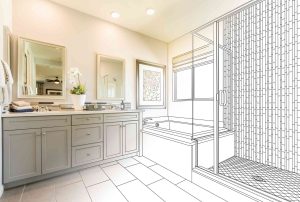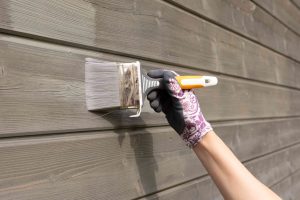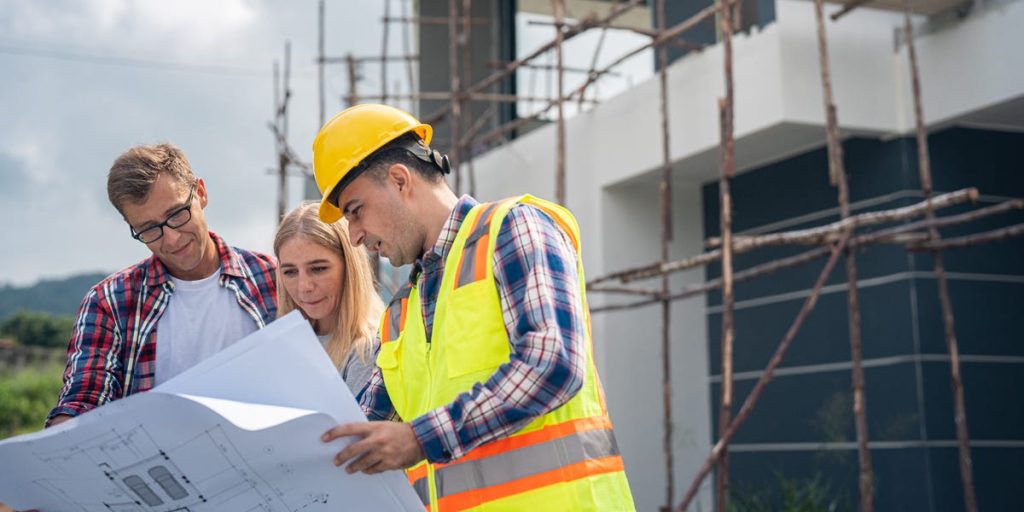Our experts answer readers’ home-buying questions and write unbiased product reviews (here’s how we assess mortgages). In some cases, we receive a commission from our partners; however, our opinions are our own.
- An FHA 203(k) mortgage rolls the selling price of a home and the cost of needed repairs into one loan.
- A minimum credit score of 500 is required to qualify, with down payments as low as 3.5%.
- You can also use an FHA 203(k) loan to refinance your current mortgage to pay for renovations.
Finding an affordable, move-in-ready home in a competitive market can be a big challenge. When there are more buyers than sellers in a particular area, you may find yourself in a situation where bidding wars are pushing prices out of the range you’re able to pay.
One way to solve this problem is to find a fixer-upper house in the place you want to live and finance it with an FHA 203(k) loan.
What is an FHA 203(k) loan?
An FHA 203(k) loan is a government-backed mortgage that combines the purchase price of a house and the cost of the needed renovations into a single loan. Existing homeowners can also use an FHA 203(k) to refinance.
“It’s the perfect loan for the ugly house that won’t sell,” says mortgage broker Kris Radermacher of Klear2Klose Team powered by Lincoln Lending Group. “It allows a buyer to go in and negotiate on a home at a lower price and get it to a higher value.”
FHA 203(k) mortgages are backed by the Federal Housing Administration. The qualifications are similar to those for regular FHA loans, which can be easier to get than conventional mortgages.
This makes them a good option for buyers in competitive markets where there is a shortage of affordable homes. An FHA 203(k) loan can make it possible to purchase a fixer-upper that other buyers might pass by because of the extra work involved.
If your home needs home improvements such as remodeling the kitchen, new bathrooms, or flooring, you can also refinance with an FHA 203(k) and include the renovation costs in your mortgage.
How does an FHA 203(k) loan work?
There are two types of FHA 203(k) mortgages, each with different borrowing limits and allowable renovations. If using an FHA 203(k) to buy a home, it must be used as your primary residence. They aren’t allowed for investment properties.
The loans can have fixed or adjustable rates, with down payments as low as 3.5%. You can use them to finance single-family homes, one-to-four-unit properties, as well as condos and townhomes under certain conditions.
If you don’t plan to live in the home during construction, you can finance up to six months of mortgage payments.
Types of FHA 203(k) loans
There are two types of FHA 203(k) loans with different guidelines and rules for how much you can borrow and how the money is used. The type you choose will depend on the repairs needed.
-
Limited: These apply to smaller projects with fewer requirements. They provide as much as $35,000 for renovations, with no major structural repairs.
-
Standard: These are used for major structural repairs. Renovation costs must be at least $5,000. An approved FHA 203(k) consultant is required to supervise the project.
FHA 203(k) loan requirements
Below are the criteria to be eligible for an FHA 203(k) loan, which are similar in most ways to a regular FHA loan.
-
Credit score: A minimum credit score of 500 is required.
-
Down payment: A minimum down payment of 3.5% is required if your credit score is 580 or higher. The down payment is 10% for scores between 500-579.
-
Debt-to income ratio: Your debt-to-income ratio (including your proposed monthly housing payments) should not exceed 43% of your income.
-
Property type: Eligible property types are single-family homes, one-to-four unit properties, and individual-owned condo or townhome units for interior repairs only.
-
Occupancy: The owner must reside in the home.
-
Homebuyers: Loans are available to all borrowers, including first-time homebuyers and existing homeowners who want to refinance.
-
Income: There are no income limits.
What kind of renovations does an FHA 203(k) loan cover?
FHA 203(k) loan proceeds can be used for various kinds of projects. Some of the most common include:
-
Roofing
-
Flooring
-
Plumbing
-
Bathroom or kitchen remodeling
-
Health and safety hazards
-
Landscaping
-
Energy-efficient upgrades
-
Enhancing accessibility
FHA 203(k) loan pros and cons
As with any financial decision, using an FHA 203(k) has both its benefits and drawbacks.
While this type of mortgage may provide a way for someone with a lower credit score or less cash for a down payment to get into a home in an area they might not otherwise be able to afford, the process is more complicated and time-consuming than buying a turnkey home.
An FHA 203(k) loan also requires that you pay mortgage insurance. And you aren’t allowed to offset the renovation costs by doing any of the work yourself.
Here’s a summary of some of the main pros and cons to consider:
How to buy a home with an FHA 203(k) loan
Here’s the step-by-step process for buying a home with an FHA 203(k) loan:
Step 1. Get pre-approved by an FHA 203(k) lender
Find an authorized FHA 203(k) mortgage lender and get pre-approved. You can use the US Department of Housing and Urban Development’s search page to determine if a lender has done a 203(k) loan in the past 12 months.
Step 2. Find your home
Find a home that requires renovation. Searching through local online listings for homes that are priced below the area’s market value is one way to do it. You can also try keywords such as “fixer-upper” or “handyman special,” which is how real estate agents often market such properties. A local buyer’s agent can also help you find a place.
When you find a home that needs repairs, make sure you let the seller know that you’ll be using a 203(k) loan to complete the purchase.
Step 3. Select your contractor and get bids
When you buy a property that needs structural repairs, you’re required to use an FHA-approved 203(k) consultant. Some 203(k) consultants are licensed contractors and home inspectors. You can search on the HUD website for an approved 203(k) consultant or licensed contractor. An easier way may be to ask a licensed mortgage lender who may know 203(k) consultants to recommend.
The 203(k) consultant will work with you on the remodeling plans and, having worked under the FHA 203(k) process, be familiar with the requirements.
Step 4. Get an offer from a contractor in writing
Once you’ve accepted a bid from a contractor to do the work, get a detailed offer in writing. It should include all renovation costs including labor and materials. There should also be a specific timeline for the work to be completed.
Step 5. Submit all the information to the underwriter
The underwriter will work with the appraiser to determine the after-repair value, which determines the loan amount.
Step 6. Close the loan
When all the above paperwork is finalized, the loan is closed. The purchase amount is disbursed to the seller. The remaining funds to renovate the home go into an escrow account and are disbursed based on the agreed-upon contract.
Step 7. Move into your new home
The renovations must begin within 30 days of closing the loan, and the work must be completed within six months. If the project is not extensive, you can move into the house right away and live there as it is being completed. If you can’t live there during the renovations, it’s possible to finance as many as six months of mortgage payments before you move in.
Related: The best home improvement loans »
Read the full article here














